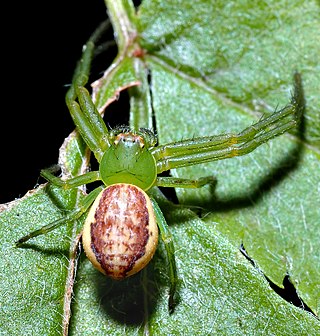
The genus Haematomyzus includes three species of lice that differ so markedly from all other lice that the genus is placed in its own family Haematomyzidae, itself monotypic within the superfamily Rhynchophthirina. These unusual lice are ectoparasites of elephants and warthogs. Their mouthparts are elongated to form a drill-like structure that allows them to penetrate the thick skin of their host.

The Amblycera are a large clade of chewing lice, parasitic on both birds and mammals. The Amblycera are considered the most primitive clade of lice.

Rasbora is a genus of fish in the family Cyprinidae. They are native to freshwater habitats in South and Southeast Asia, as well as southeast China. A single species, R. gerlachi, is only known from an old specimen that reputedly originated from Africa (Cameroon), but this locality is considered doubtful. They are small, up to 17 cm (6.7 in) long, although most species do not surpass 10 cm (4 in) and many have a dark horizontal stripe.

Cumnoria is a genus of herbivorous iguanodontian dinosaur. It was a basal iguanodontian that lived during the Late Jurassic period in what is now Oxfordshire, United Kingdom.

Diaea is a genus of crab spiders first described by Tamerlan Thorell in 1869. Most species are found in specific locations except for D. livens, which occurs in the United States and D. dorsata, which has a palearctic distribution. Adults are 5 millimetres (0.20 in) to 7 millimetres (0.28 in) and tend to hide in and around vegetation, especially flowers, where their color allows them to blend in to their surroundings.

Jules René Bourguignat was a French malacologist, a scientist who studied mollusks. He served as secretary-general of the Société malacologique de France. He traveled widely, visiting, for example, Lake Tanganyika and North Africa. He reportedly defined 112 new genera and around 2540 new species of mollusks.

Liotina is a genus of sea snails, marine gastropod mollusks in the family Liotiidae.

Favartia is a genus of sea snails, marine gastropod mollusks in the family Muricidae, the murex snails or rock snails. It is known for its crystalline shell.

Epicauta is a genus of beetles in the blister beetle family, Meloidae. The genus was first scientifically described in 1834 by Pierre François Marie Auguste Dejean. Epicauta is distributed nearly worldwide, with species native to all continents except Australia and Antarctica. Surveys have found the genus to be particularly diverse in northern Arizona in the United States. Few species occur in the Arctic, with none farther north than the southern Northwest Territory of Canada.
Strigiphilus is a genus of chewing louse in the suborder Ischnocera. It was circumscribed in 1910 by Eric Mjöberg.

Colpocephalum is a genus of chewing louse. Christian Ludwig Nitzsch named the genus in 1818. The Plenary Powers of the International Commission on Zoological Nomenclature selected Colpocephalum zebraBurmeister, 1838 as its type species in the 1950s. There are approximately 135 species in this genus, and they are ectoparasites of birds in at least a dozen different orders.

Rallicola is a genus of chewing louse. It is an ectoparasite of rails and other birds. It was named by Thomas Harvey Johnston and Launcelot Harrison in 1911. There are two subgenera aside from the nominotypical subgenus: Aptericola, whose species are found on kiwi birds, and Huiacola, a monospecific subgenus consisting of Rallicola extinctus, once found on the huia.

Actornithophilus is a genus of louse in the family Amblycera. It was circumscribed by Gordon Floyd Ferris in 1916. Its species are ectoparasites of birds in the order Charadriiformes.

Pedicinus is a genus of sucking louse, the only genus in the family Pedicinidae. Species belonging to this genus are found on Old World monkeys and apes of different kinds. Pedicinus, along with its sister genus Pthirus, are believed to have diverged from their common ancestor approximately 22.5-2.5 million years ago.
Cytherella is a genus of seed shrimp in the family Cytherellidae.
Halipeurus is a genus of insects belonging to the family Philopteridae.
Bovicola is a genus of lice belonging to the family Trichodectidae.












